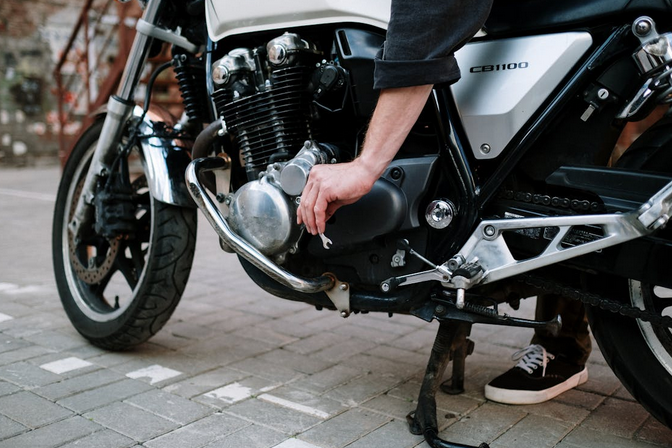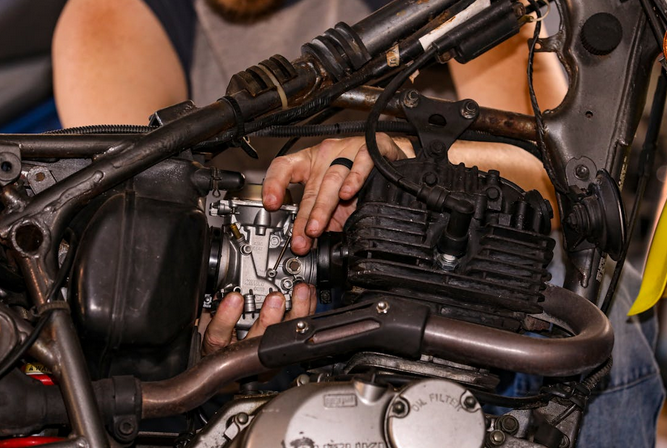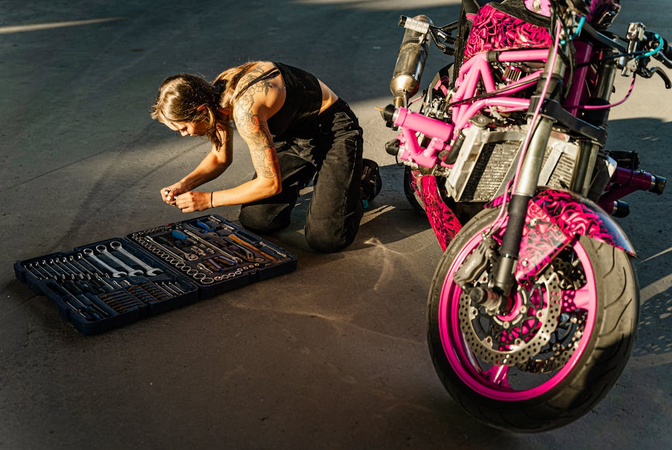As the sun rises on a new era of motorcycle technology, savvy riders are discovering that mastering engine temperature management isn’t just a performance enhancer—it’s a necessity. Whether you’re zipping through city streets or conquering winding mountain roads, keeping your bike’s engine at optimal temperatures can mean the difference between an exhilarating ride and an unexpected breakdown. In this blog post, we’ll dive into essential strategies to help you maintain perfect engine temp control, ensuring that your two-wheeled companion runs smoothly and efficiently. Get ready to rev up your knowledge and ride smarter than ever before.
Let Your Bike Warm up—But Don’t Overdo It
Starting up and blasting off isn’t the move. Your engine needs a little warm-up time, especially on chilly mornings. Letting your bike idle for 30 seconds to a minute helps the oil circulate and brings the temperatura funcionamiento motor up to a safe level. But here’s the key: don’t just sit there revving it for five minutes thinking you’re helping. That can cause the engine to heat up unevenly and waste gas. Instead, aim for a smooth, easy ride for the first few miles. This gradual warm-up helps everything expand properly, which is great for long-term wear and tear. Plus, it gives you a better feel for how your bike runs that day—any weird noises or lags? You’ll catch them early.
Watch That Temp Gauge Like It Owes You Money

Many newer bikes have temp gauges or warning lights, and they’re not just there for decoration. Your eyes should glance at that gauge the way you check your mirrors—frequently and with purpose. If you’re in stop-and-go traffic or stuck at long lights, your engine isn’t getting the airflow it needs to cool off. That’s when temps can spike fast. If you notice the needle creeping up, kill the engine if it’s safe to do so, or shift into neutral and give it a gentle rev to get the coolant circulating. Also, don’t ignore warning lights. If that overheat indicator pops on, it’s not a drill. Shut it down, cool it off, and check things out. Riding through it could mean warped heads or worse.
Don’t Ride the Clutch in Traffic
Traffic jams are the enemy of a cool engine. Besides the lack of airflow, slipping your clutch constantly just adds more internal heat to the mix. Try to avoid feathering the clutch more than necessary. If you can coast or crawl in gear without constantly riding the friction zone, do it. Not only will your clutch plates last longer, but your engine won’t be constantly revving at low speeds and building heat. If you’re riding a bike with a fan-equipped radiator, listen for it kicking on—and if it’s not, it might be time to get that checked. Your best bet in gridlock? Chill riding. Ease up on throttle blips and keep the RPMs low and steady.
Keep the Coolant Fresh and the Radiator Clean

Coolant doesn’t last forever, even though it looks like it should. It breaks down over time and can even start corroding the inside of your cooling system if left unchanged. Most manufacturers recommend changing it every two years or so but check your manual. And here’s a bonus tip: make sure you’re using the type of coolant your bike needs. Some engines need specific formulas or pre-mixed solutions. Also, take a peek at your radiator fins. If they’re caked with dirt, bugs, or debris, airflow takes a hit and your cooling system has to work overtime. A soft brush or a gentle spray from the hose can clear them up nicely. Just don’t go full pressure-washer mode—you might bend the fins.
Use the Right Oil and Change It on Schedule
Your oil isn’t just keeping things slippery—it’s also pulling heat away from the engine’s hottest parts. If your oil is old, dirty, or has the wrong viscosity, your engine’s cooling efficiency takes a hit. Stick to your service intervals and always use the type and weight of oil recommended by your bike’s manufacturer. Some high-performance or air-cooled engines might benefit from synthetic oil, which handles high temps better and stays stable under pressure. Think of oil changes like hydration for your bike. Fresh oil = happy engine. And if you’re riding in super-hot climates or pushing your bike hard, check your oil level more often. Topping off could save you a world of hurt.
At the end of the day, engine temperature management isn’t just for gearheads or racers—it’s essential for anyone who wants their bike to perform well and last longer. Whether you’re commuting, touring, or just riding for fun, keeping your engine cool means smoother rides, fewer breakdowns, and more time on the road. It all comes down to paying attention: warm up properly, keep your fluids fresh, monitor your temperature gauge, and avoid habits that generate unnecessary heat.




